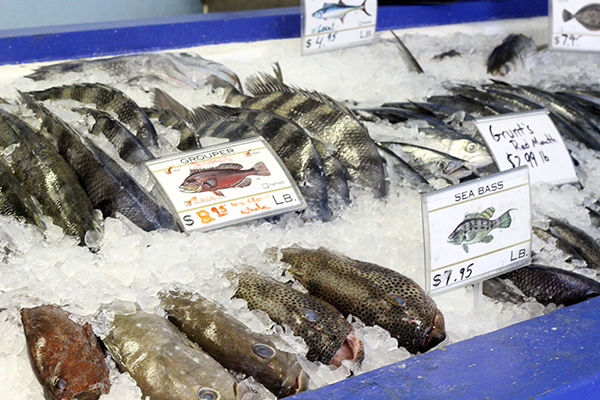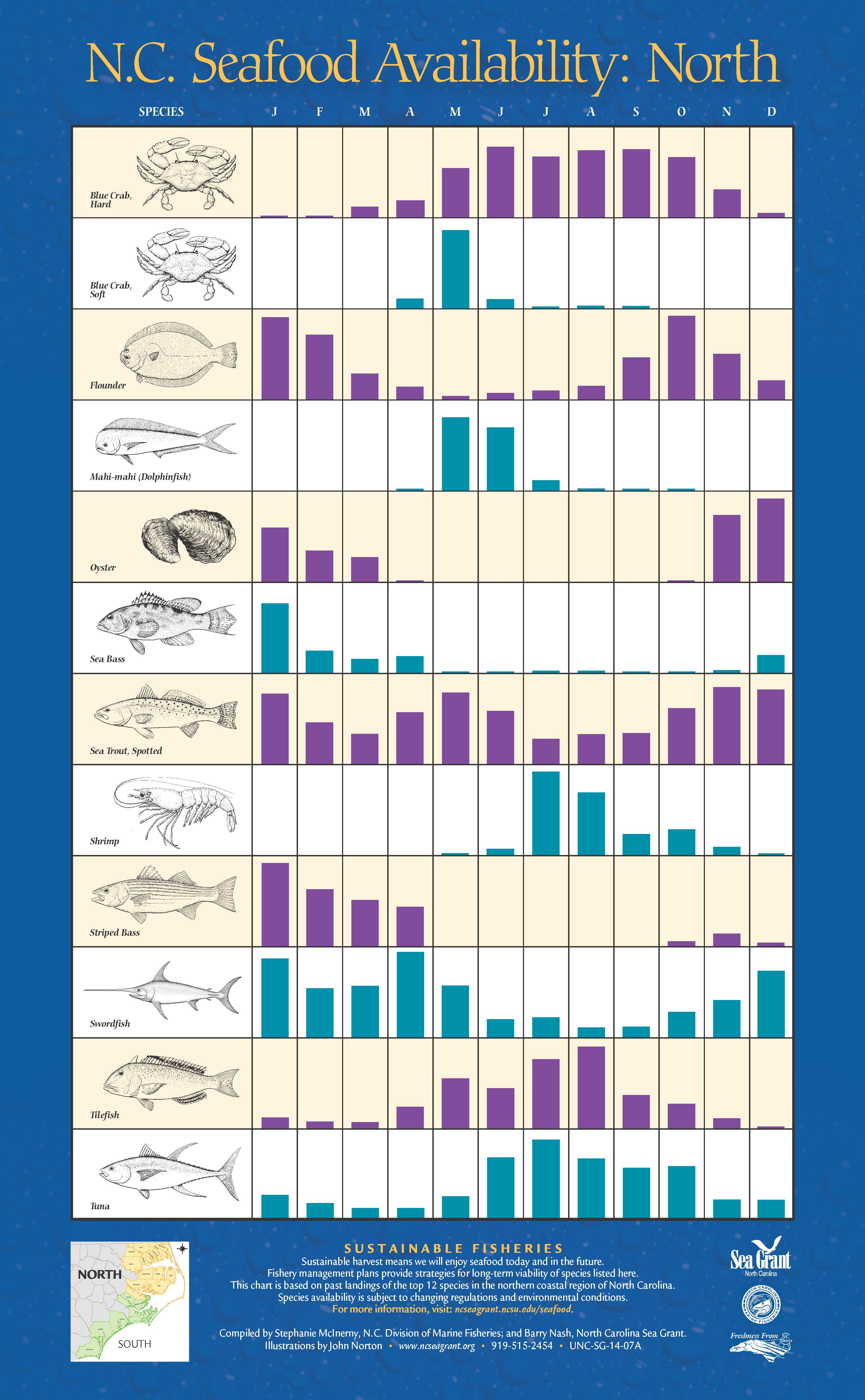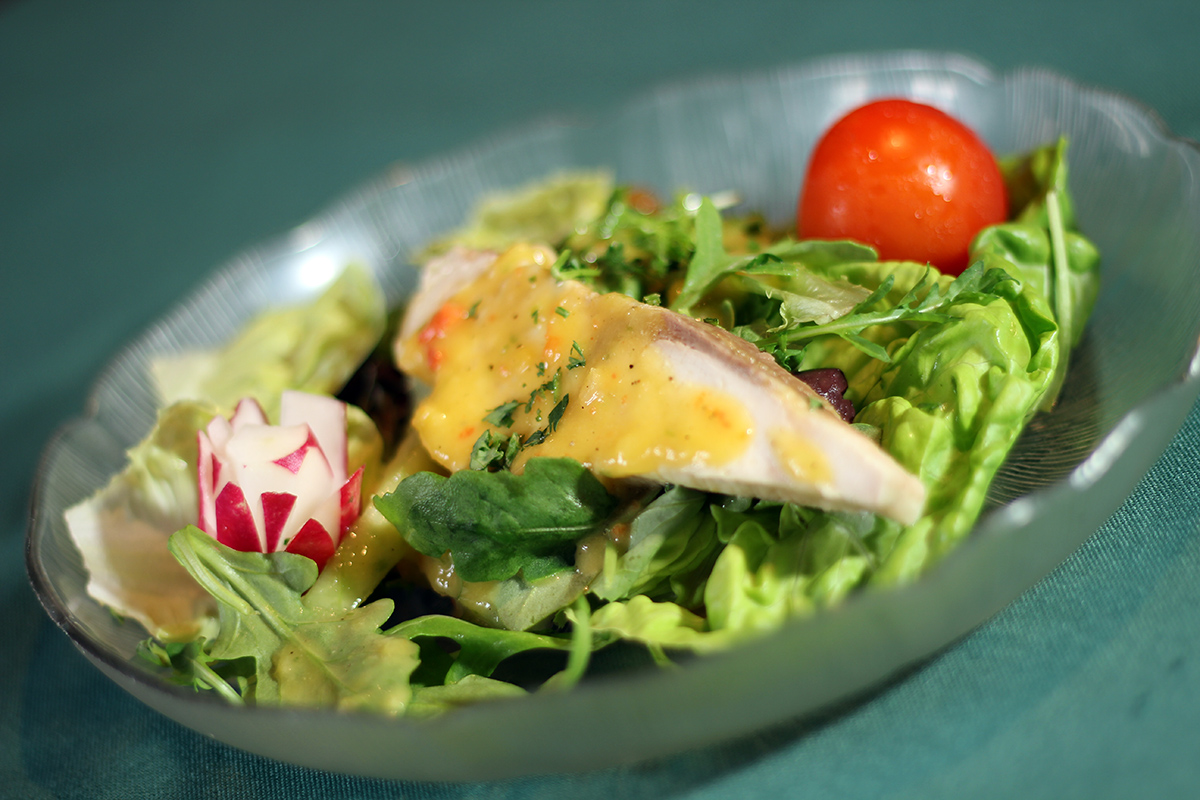The beginning of November may mark the end of National Seafood Month but we encourage you to consider adding seafood to your menu year-round. North Carolina Sea Grant offers resources for picking and preparing fresh, safe seafood, including Mariner’s Menu recipes now available on Pinterest.

The USDA suggests eating two servings — 8 ounces total — of seafood a week for the general population. Photo by Vanda Lewis.
In the late afternoon when your stomach starts to grumble, your mind may start to wonder: What’s for dinner?
Most likely, you don’t have a ready answer. According to polling data, 80 percent of Americans do not know what they will have for dinner at 4 p.m. This quandary likely leads to another: cook at home or eat out?
More and more, Americans are choosing to eat out. The average household acquires food from restaurants and other eating places more than five times a week, a significant increase from the two times a week they averaged in the mid-1960s. Reinforcing this trend, sales at restaurants and bars overtook spending on groceries for the first time in spring 2015.
While good for the restaurant industry, excessive eating out can be bad for our waistlines, pocketbooks and even our parenting. Eating one meal away from home each week can pack on an additional 2 pounds per person per year, according to the United States Department of Agriculture. Despite the low-cost perception of fast food, eating out potentially costs twice as much as healthy food prepared at home. Home-cooked meals also generally provide better nutrition and opportunities to develop relationships between family members.

The regional availability charts are based on past landings of the top 12 species in the northern and southern coastal regions of North Carolina.
So, what’s really preventing us from firing up the stove and bringing dinner to the table? Disheartened cooks cite a lack of time, fresh ingredients and cooking skills as challenges.
Thankfully, there are plenty of resources available to overcome these barriers — including materials related to seafood made available by North Carolina Sea Grant.
Seafood, including fish and seafood, is a good source of high-quality protein, nutrients and omega-3 fatty acids. Eating seafood can help prevent heart disease and also may reduce the risk of stroke, depression and other chronic diseases.
Despite proven benefits, the average American consumes just under 5 ounces of seafood per week. The USDA suggests eating two servings — 8 ounces total — a week for the general population.
If you like to shop local, seafood can be a great choice. North Carolina fishermen supply a wide variety of seafood choices year-round, though not every species is available at all times. Consult Sea Grant’s availability charts by region or by season to determine what you currently may find in the market from our waters.
More than 90 percent of all seafood consumed in the U.S. is imported so it is important not only to know what is in season but also where to find local catch. Sea Grant collaborates with fishermen and local catch groups — Brunswick Catch, Carteret Catch, Ocracoke Fresh and Outer Banks Catch — to help consumers who prefer purchasing local products. Consult your local group or NC Catch to find places on the coast and inland where you can purchase North Carolina seafood.

This recipe for steamed sturgeon salad was created by Chef Tim Coyne of Bistro by the Sea in Morehead City. Photo by Vanda Lewis.
When selecting seafood, quality counts. According to Mariner’s Menu, a resource guide for purchasing and preparing North Carolina seafood, the shelf life of seafood depends primarily on three factors: the species, where and when it was landed, and how well it was handled before purchase. Know what to look for — and what to avoid with this simple chart. It’s also important to follow simple precautions once home to ensure the safety of all who dine on your carefully chosen catch.
Whether you’re looking to get creative or just get going in the kitchen, Mariner’s Menu has the answer. It’s tried-and-true recipes cover the traditional species and dishes and offer new, delicious ideas, and possible substitutions. Some unexpected dishes, like lionfish with fresh herbs or steamed sturgeon salad, come from Sea Grant’s work with local fishermen to develop new markets for underutilized species.
You can purchase a hard copy from our bookstore for all of the recipes — get 15 percent off now until Dec. 31 — or peruse selected dishes on the blog, which also features seafood inspiration from around the web.

Pinterest allows users to easily find, save and share recipes, including those posted by North Carolina Sea Grant.
If you get your meal inspiration from Pinterest, you can find us there too. Sea Grant has started sharing Mariner’s Menu recipes and seafood sightings on Pinterest so you can easily save your favorites — and share them with your friends! Follow our recipes at pinterest.com/ncseagrant.
Consider adding seafood to your Thanksgiving menu, too. On Pinterest, you’ll find hot and cold appetizers, several varieties of oyster stuffing, and a recipe for the type of fish served at the first Thanksgiving. Let us know if any of these dishes anchor of your holiday spread this year!